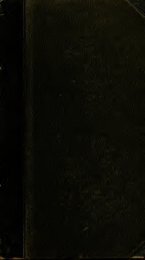Download PDF
Download PDF
Download PDF
Create successful ePaper yourself
Turn your PDF publications into a flip-book with our unique Google optimized e-Paper software.
76<br />
ZYGNEMATACEAE<br />
Key to the Species of DEBARYA<br />
I. Zygospore median wall tricarinate 2<br />
1. Zygospore median wall quadrangular-<br />
ovoid 5. D. hardyi<br />
I. Zygospore median wall globose to<br />
polyhedric 6. D. polyedrica<br />
2. Polar surfaces with a distinct "hub" i. D.glyptosperma<br />
1. Polar surfaces without "hub" 3<br />
3. Diameter vegetative cells i8m or more 4. D.smithii<br />
3. Diameter vegetative cells less than i>S/x 4<br />
4. Polar surfaces obscurely radially<br />
striate 2. D. costata<br />
4. Polar surfaces obscurely pitted.... 3. D.ac^leyana<br />
Descriptions of Species<br />
1. Debarya glyptosperma (de Bary) Wittrock 1872. Bih. Kgl.<br />
Sve7isk, Veiensl{. Akad. Handl. 1, p. 35.<br />
Vegetative cells 10-15 ju, x 40-200 m, with a single, axile, flat, ribbon-<br />
like chromatophore with 8 to 12 pyrenoids; conjugation scalariform,<br />
tubes very long (up to 80 /a), at first slender and increasing in width<br />
until spore is mature; spores formed in the tubes, compressed-ellipsoid<br />
or broadly ellipsoid, 30-46 /x x 42-72 /it; median spore wall tricarinate,<br />
yellow, with an irregular polar ring of protuberances; radially and dis-<br />
tinctly corrugate between the "keels and hubs" when mature. (PI. XII,<br />
Figs. 18-19.)<br />
United States: Reported from New Hampshire, Minnesota, Florida.<br />
Europe, widely distributed from Wales to Russia and Spain.<br />
The variety "formosa" Transeau (1915) is an error.<br />
2. Debarya costata Randhawa 1938. Proc. hidiati Acad. Sci.<br />
8, p. 121, Fig. 2.<br />
Vegetative cells 7-11/J- x ioo-150/u, with a single axile ribbonlike<br />
chromatophore with 4 to 10 pyrenoids; conjugation scalariform with<br />
slender long tubes; zygospores, 36-44 ^ x 38-50/1, compressed-globose to<br />
ovoid, tricarinate with clearly defined ridges between the keels; the<br />
polar faces of the spores have no "hubs" as in D. glyptosperma but are<br />
obscurely and radially corrugate toward the margin. The color is bright<br />
yellow, and lateral keels are crinkly. (PI. XII, Figs. 22-23.)<br />
India, Fyzabad, U.P., December, 1936.<br />
The specimens sent me by Randhawa contain mature spores, and the<br />
above description is based in part on this material.




